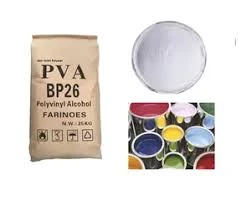HPMC Manufacturing Plant An Overview of Production and Applications
Hydroxypropyl methylcellulose (HPMC) has become an essential ingredient in a wide range of industries, including construction, pharmaceuticals, food, and cosmetics. As demand for this versatile polymer continues to grow, the establishment and operation of HPMC manufacturing plants have become critical to meet global needs. This article explores the essential aspects of HPMC manufacturing plants, focusing on their production processes, applications, challenges, and future prospects.
Production Process
The production of HPMC typically occurs in several key stages synthesis, purification, drying, and packaging. The process begins with the selection of cellulose as a raw material, which is derived from natural sources like wood or cotton. The cellulose is then chemically treated using propylene oxide and methyl chloride in a controlled environment. This reaction modifies the cellulose structure, creating hydroxypropyl and methyl groups that enhance its solubility and functional properties.
Following synthesis, the HPMC undergoes purification to remove any impurities or unreacted materials. This step is crucial, as the quality of the final product must meet stringent industry standards. The purified HPMC is then dried to achieve the desired moisture content and consistency. The drying process is particularly important; excessive moisture can lead to clumping and degradation of the polymer's properties.
Finally, the dried HPMC is milled into a fine powder and packaged in moisture-proof containers. Manufacturers often conduct rigorous testing during each stage of production to ensure that the HPMC meets the required specifications for various applications.
Applications
HPMC's unique characteristics make it a preferred choice in multiple applications. In the construction industry, it is widely used as a thickening agent in mortars and adhesives, improving workability and water retention. This is particularly crucial for tile adhesives and cement-based panels, where extended open time and bonding strength are necessary.
In the pharmaceutical sector, HPMC serves as an excipient for drug formulations. Its ability to form gel-like structures makes it ideal for controlled-release applications, enhancing the bioavailability of active pharmaceutical ingredients. Additionally, HPMC is used in the production of capsules, both as a coating and as a binding agent.
hpmc manufacturing plant

In the food industry, HPMC acts as a stabilizer, emulsifier, and thickener. It is commonly used in low-fat and gluten-free products, providing texture and enhancing mouthfeel without compromising flavor. Furthermore, in cosmetics and personal care products, HPMC is added for its film-forming and emulsifying properties, contributing to the texture and stability of creams and lotions.
Challenges in Manufacturing
While HPMC manufacturing presents significant opportunities, it also faces several challenges. Environmental regulations are one of the primary hurdles, as the production process can generate waste and emissions. Manufacturers must invest in sustainable practices and technologies to minimize their environmental footprint and comply with regulatory standards.
Quality control is another critical aspect of HPMC production. Variability in raw materials can lead to inconsistencies in the final product, affecting its performance in various applications. Manufacturers must implement robust quality assurance processes to monitor raw material sources and production conditions.
Additionally, competition within the market can drive down prices, making it essential for manufacturers to optimize their production processes continually. This may involve adopting advanced technologies, such as automation and data analytics, to enhance efficiency, reduce costs, and improve product quality.
Future Prospects
Looking ahead, the future of HPMC manufacturing appears promising. The increasing demand for sustainable and eco-friendly materials is expected to propel growth in the industry. Innovations in biopolymer production and the use of renewable raw materials will play a vital role in shaping the future of HPMC manufacturing plants.
Furthermore, the expansion of the pharmaceutical and construction sectors, particularly in emerging economies, will likely lead to a surge in HPMC demand. Manufacturers who invest in research and development to diversify their product offerings and improve process efficiency will be well-positioned to capitalize on these trends.
In conclusion, HPMC manufacturing plants represent a critical component of various industries, driving technological advancements and contributing to the development of innovative products. By addressing the challenges faced in production and embracing future opportunities, manufacturers can ensure the long-term viability and success of HPMC in the global market.
-
Rdp Powder: Key Considerations for Wholesalers in the Building Materials IndustryNewsJul.08,2025
-
Key Considerations for Wholesalers: Navigating the World of Hpmc - Based ProductsNewsJul.08,2025
-
Hpmc Detergent: Key Considerations for WholesalersNewsJul.08,2025
-
Key Considerations for Wholesalers: China Hpmc For Tile Adhesive, Coating Additives, Concrete Additives, and MoreNewsJul.08,2025
-
Crucial Considerations for Wholesalers: Navigating the World of Construction MaterialsNewsJul.08,2025
-
Key Considerations for Wholesalers Sourcing Additive For Cement, Additive For Concrete, Additive For Putty from Additive Manufacturer Shijiazhuang Gaocheng District Yongfeng Cellulose Co., Ltd.NewsJul.08,2025




